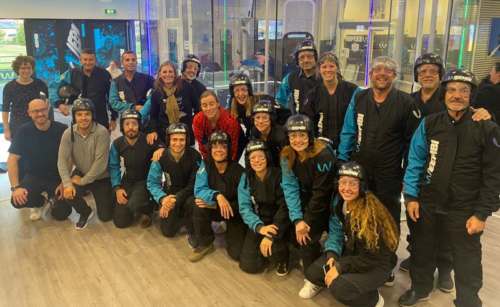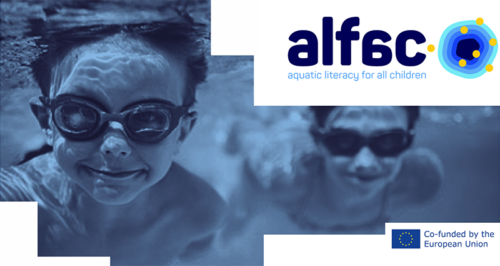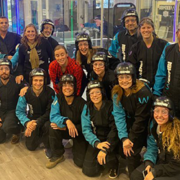Embracing “Sport for Life” in France and Europe: Diving into aquatic literacy
 In today’s global landscape, the significance of physical literacy is gaining traction, spearheaded by dedicated researchers and experts like those who shared their work at the International Physical Literacy Conference in May. These physical literacy champions aim to illuminate the significance of physical literacy and equip individuals with the knowledge and resources to promote engagement in lifelong movement.
In today’s global landscape, the significance of physical literacy is gaining traction, spearheaded by dedicated researchers and experts like those who shared their work at the International Physical Literacy Conference in May. These physical literacy champions aim to illuminate the significance of physical literacy and equip individuals with the knowledge and resources to promote engagement in lifelong movement.
In recent years, Sport for Life has collaborated with a dedicated team in France to further the growth of physical literacy within the country.
Today, we dive into aquatic physical literacy with Léa Mekkaoui, a Ph.D. student spearheading water competence and safety advancements in France and Europe with the Aquatic Literacy for All Children (ALFAC) consortium. Mekkaoui showcased the group’s work around aquatic literacy at Sport for Life’s International Physical Literacy Conference 2023 in New York—a further step in detailing current levels of aquatic literacy in Europe, building tools to support its advancement, and sharing their methods to an international audience as the concept grows.
The significance of aquatic literacy
A key component of physical literacy is the confidence to move in various environments, including water. It’s that facet that the ALFAC consortium is dedicated to researching and revolutionizing.
“Aquatic physical literacy empowers children with a wide range of skills–physical, psycho-social, and cognitive – necessary to engage safely and confidently in water activities. It opens doors to many health benefits associated with water-based physical activities,” Mekkaoui explained.
As stated on their website, the consortium is a “partnership between researchers, educators and institutional stakeholders from Europe aiming to improve the quality of aquatic education. It addresses the educational challenge of improving aquatic literacy (AL) levels of children aged 6-12, to better protect them from the dangers of being active in water environments, and to motivate them to engage in water-based activities both now and later.”
Ten partners across 7 European countries make up the consortium and bring different national drowning accident rates and understanding of water education to the table–representing an important diversity of swim instruction across the continent. Altogether, 20 researchers and pedagogues are represented on their team.
Their project aims to bring these concepts to address the unique challenges of aquatic environments and create “diagnostic and pedagogical tools to raise awareness of AL of children.”
Data collection strategies and project phases
 The first step of their work, which has already been completed, is the creation of the test battery to look for the strengths and the weaknesses in the different aquatic programs and education in Europe.
The first step of their work, which has already been completed, is the creation of the test battery to look for the strengths and the weaknesses in the different aquatic programs and education in Europe.
“Because the concept of AL is really new in literature, we decided to create a test battery based on the concept of physical literacy and water competencies,” Mekkaoui explained. In particular, the consortium is working with the water competencies proposed by Stallman et al. in 2017, outlining 15 essential skills for water safety and the physical literacy framework pioneered by Margaret Whitehead in 1993.
Subsequently, data collection efforts aim to apply the test battery to approximately 10,000 children across seven countries. This phase started in France, Belgium, Germany and Lithuania from June to September 2023, with specific aquatic motor skill tests, adaptative ‘parcours’ and a questionnaire implemented for youth participants and questionnaires sent to parents. This work will extend to Portugal, Norway and Poland throughout 2024.
Lastly, the project will create resources to aid instructors in developing the different domains of aquatic literacy. The meticulous planning of data collection, feasibility assessment, and validation form the cornerstone of the project’s progress.
The testing in detail
How does the testing work? As Mekkaoui explained, the study involves assessing children’s swimming abilities and safety perceptions for participants aged 6-12. The first step is to gather information from parents through a questionnaire about demographic data, their children’s prior water experience, social issues they face, and their views on their children’s safety and competencies. This questionnaire is completed at home.
Next, questionnaires are administered at school to gather information on children’s perceptions of their swimming skills, engagement, risk perceptions, and confidence in an app related to swimming.
Following the questionnaires, the children are taken to a swimming pool where their motor skills are assessed separately. Afterward, they participate in a water-based obstacle course, bringing in decision-making. This part of the study evaluates their abilities and decision-making in action.
Alignment with Sport for Life
The consortium’s work highlights the development of physical literacy in various environments beyond just land. Having consulted Sport for Life’s Physical Literacy in Aquatic Environments: A Discussion Paper resource, Mekkaoui is confident in the consortium and Sport for Life’s alignment.
“We are aligned on the same idea because we are both focusing on the development of the children on land and in the water. I also think we are almost on the same line of thinking, that maybe the difference will be in the operationalization because we are creating some tools to use validated with European young people,” she said. “Maybe in the future, we can see if this tool can be applied across the Atlantic Ocean and European borders.”

